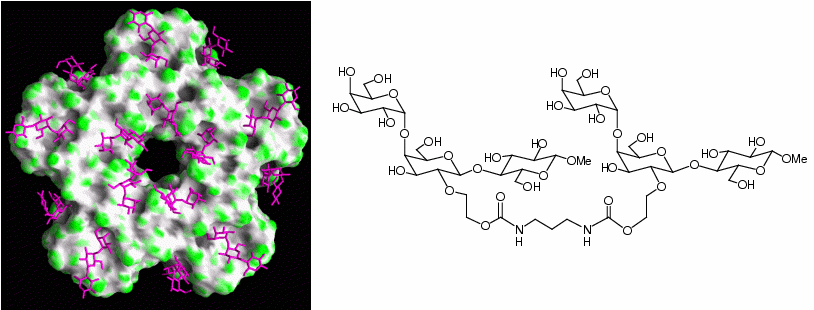
A molecule that binds very tightly to the toxin could block toxin action by preventing binding to cells. But, to be useful, such a molecule would have to be bound by the toxin at least as tightly as a cell membrane. One approach to improve binding by the Pk-trisaccharide molecule is to link a number of them together in such a way that several can bind at once. Armed with the information that sites 1 and 2 are most important for binding of the toxin to Gb3, we focused first on linking two molecules so that they could bind to those two sites.

The figure on the left shows the surface of the toxin B pentamer, together with stick representations (in purple) of the trisaccharides. The surface representation of the protein shows that it is much more complicated than the schematic representations shown earlier. More importantly, it shows a path that could be followed by a linker between trisaccharides in sites 1 and 2 at the far right of this figure. The figure on the right shows a pair of trisaccharides, connected by a linker designed to follow the path. This bridged-Pk molecule indeed bound more tightly to the toxin. It did not bind tightly enough to be a potential drug molecule, but we knew we were on the right track.
|
Back Sugar binding to SLT-I |
Up Back to top |
Next The starfish inhibitor: molecular Velcro |